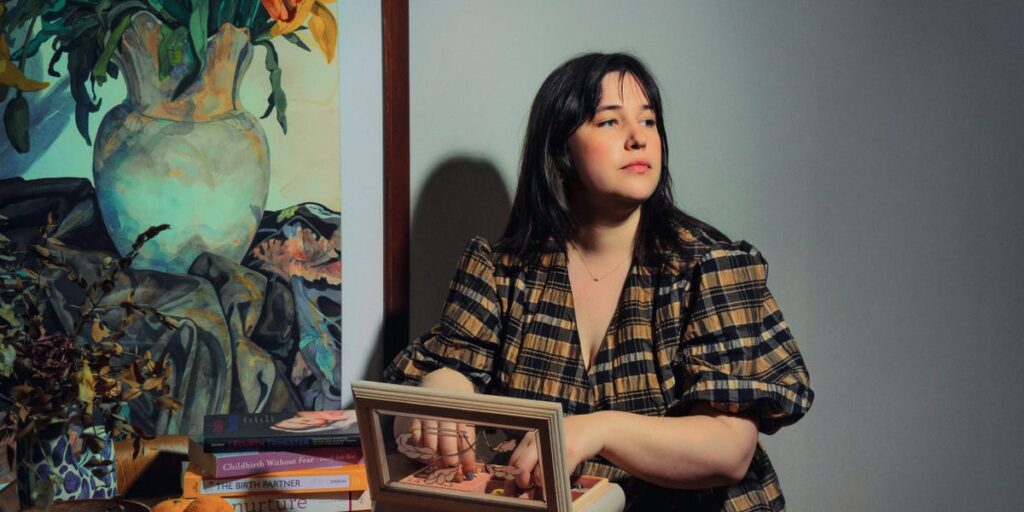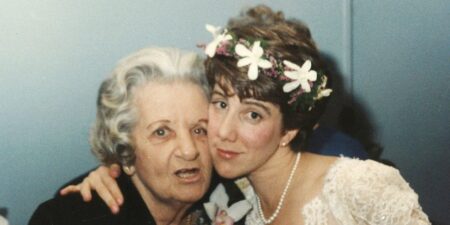This as-told-to essay is based on a conversation with Jane Frost, a birth and postpartum doula in New York City. She left her job in the fashion industry to learn how to support new parents. Frost shares how she started, what she loves about it, and the challenges of the industry. The following has been edited for length and clarity.
If you’d asked me 10 years ago what I wanted to do with my life, I would never have guessed that I’d someday have a successful career as a birth and postpartum doula. I studied art history in college, then moved to New York City to work in the fashion industry.
For a while, I worked in marketing and styling, then transitioned into jewelry design. Eventually, I accepted that I didn’t like the industry, so I quit my job and began nannying while figuring out what I wanted to do next.
When the mother I worked for had her second child, it opened my eyes to the challenges of having a baby in our society. I was entering my 30s at that time, and I was shocked by how much I didn’t know about pregnancy, birth, and the postpartum period. Seeing this mother go through it all, I became interested in the world of maternal health and supporting new parents.
How I got started as a doula
I’d heard about doula work, so I signed up for an online training program through an organization called Bebo Mia. There are many trainings out there for doulas, and there’s no universally recognized certification or degree you need to complete.
The program I took lasted about 16 weeks and cost roughly $1,800. It required meeting once a week for two- to three-hour courses and included education about birth, fertility, and postpartum support. Part of this training involved attending a birth, and as soon as I showed up, I knew it was where I wanted to be.
It took a while to get my first client because most people are hesitant to hire a new doula. To gain experience, I took on my first three clients pro bono. I also created an Instagram account for my business, and a more experienced doula found me through that account and reached out to me.
She served as a mentor and sometimes asked me to partner with her, which was very helpful. I also work with several agencies, including NYC Birth Village Doulas, which makes finding clients much easier.
About a year into my career, I decided to take a virtual 10-week training course through Manhattan Birth that focused on lactation and feeding. Many new parents want support in that area, so having that expertise has also helped me build my client base.
Sometimes, I provide people only with postpartum services, meaning that I help them during the immediate period after the baby is born. More often, I offer that as part of a package that includes supporting them before, during, and after the birth, including four three-hour postpartum visits.
Nowadays, I typically take on either three to four birth clients a month or a couple of birth clients and a couple of postpartum clients.
How I help new parents
I offer daytime support, though some postpartum doulas offer overnight help. As a lactation counselor, one of the main ways I work with new parents is by helping them get started with feeding their newborn. I help troubleshoot issues and, if needed, call in an International Board Certified Lactation Consultant, a more specialized type of clinical lactation consultant, to address more complicated issues.
I also help people learn the ropes of infant care. Many people want to do the first bath together because that can feel really intimidating, or I show them how to clip the baby’s nails for the first time.
Depending on how many visits they have with me, I may also do laundry, fold clothes, restock diapers, or make meals for them. Oftentimes, I’ll tell people to just go take a nap while I watch the baby.
Beyond that, I provide a lot of emotional support, like helping people process their birth and the transition they’re going through. That might involve helping a couple figure out how to share the load or work together to get more sleep.
The challenges and rewards of being a doula
The hardest thing about being a doula is accounting for slower months and fluctuations in income. That gets easier once a doula has a lot of experience, but getting to the level where you’re booked every month takes a while.
Your rate as a doula is generally based on the number of clients you’ve supported. I’ve been to 60 births, and I charge $2,500 for my birth package. But someone who has been to hundreds of births might charge upward of $4,500. For hourly postpartum care, I charge $60 an hour.
To account for slower periods, it helps to be flexible with the types of work you’re willing to do. For instance, I sometimes work as a backup for other doulas, meaning that I fill in when they’re unavailable for their clients.
If there’s something I didn’t realize before getting into this work, it’s that it’s more of a sales job than I’d imagined. You need to do a lot of interviews with prospective clients, which is typically unpaid work. And you spend a lot of time talking to people about yourself and your services.
Still, it’s so meaningful to connect with people during this vulnerable and intimate moment in their lives. You can help bridge the gaps of our flawed medical system and help make the world of birth and parenthood less isolating for people. That message is important to me on both a personal and a societal level.
Read the full article here
















